HUNGARY
Budapest

Budapest
Budapest
Budapest or the ‘Queen of the River’, as the city is also called because of the Danube that cuts the city in half, is located in Northern Hungary. Budapest is the capital of Hungary where modern and historical merge in a surprisingly beautiful way. The city originally consisted of three parts, Buda, Oboeda and Pest, which were combined. Initially, the city was called Pest-Buda, but later it became Budapest.
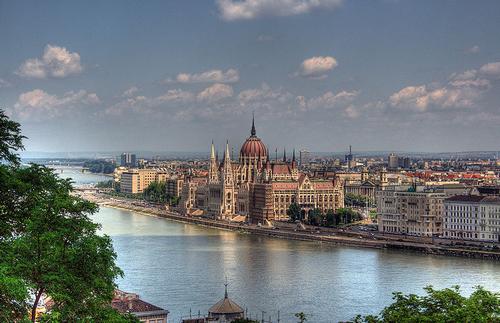 BudapestPhoto: Maurice (CC BY 2.0) no changes made
BudapestPhoto: Maurice (CC BY 2.0) no changes made
| advertisement |
| Hotels Budapest |
Location
Budapest has an area of 525 square kilometers and a population of 1.8 million. Hungary has Slovakia, Croatia, Austria, Ukraine, Romania, Slovenia and Serbia as neighboring countries and does not border the sea. Hungary consists of 19 provinces plus the independent capital Budapest.
Officially Budapest consists of three parts: Buda and Oboeda on the right bank of the Danube and Pest on the left bank of the river. The historical part of the city can be found in Buda and Oboeda and Pest is the modern part of the city. At the place where Budapest is located, the Carpathian Mountains merge into the Great Plain, which gives considerable height differences within the city.
Weather
The climate of Budapest is on the dividing line between a continental climate and a maritime climate, because Hungary is surrounded by land, which makes the influence of the Mediterranean Sea on the weather very small. This means that Budapest is considered one of the driest areas in Europe. In Budapest, the mercury can be high in the summer, while in the winter months it regularly dips below zero. Below are the average temperatures for Budapest per month.
- Budapest weather January:-0.5°C
- Budapest weather February: 2°C
- Budapest weather in March: 6.5°C
- Budapest weather April: 12°C
- Budapest weather May: 16.5°C
- Budapest weather June: 20°C
- Budapest weather July: 21.5°C
- Budapest weather August: 21°C
- Budapest weather September: 17.5°C
- Budapest weather October: 12°C
- Budapest weather November: 6°C
- Budapest weather December: 1°C
History
Magyar nomadic tribes arrived in the Carpathian Basin in the mid-9th century AD. After a while they settled in the place where Budapest is now. In the beginning, Buda and Pest were just two small and very insignificant villages.
Until the year 1873, Budapest consisted of separate settlements on both banks of the Danube. These parts have been inhabited since Roman times. After the Huns, the Hungarians conquered the place where Budapest is now located in the Middle Ages and this place grew into the capital of the Hungarian Kingdom.
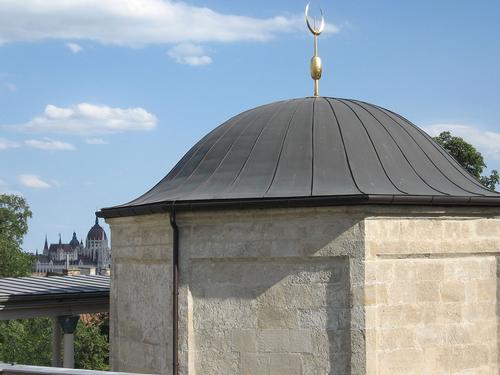 Tomb of the Turkish Derwish Gül Baba in BudapestPhoto: KIDB in the public domain
Tomb of the Turkish Derwish Gül Baba in BudapestPhoto: KIDB in the public domain
In the 16th century, the Turks entered Budapest. They expelled the Hungarians and destroyed the city. They ruled the city until the Habsburgs (Austrians) seized the area in 1686. When they conquered the country from the Turks, a devastating fire broke out that almost completely reduced Budapest to ashes. Under the Austrians, Budapest survived World War I.
World War II is the darkest period in Budapest's history. Hardly anything was left of Budapest's wealthy Jewish community after the war. After the end of the Second World War, the city was occupied by the communist Soviet Union from 1949 to 1989. During the Hungarian Uprising in 1956, the Hungarians revolted against this regime, but this was immediately quashed with many dead and injured as a result. After the fall of the Iron Curtain in 1989, Hungary became a republic and the market economy slowly took off. Budapest also became more prosperous and more modern after the fall.
Places of interest
Most of the old buildings can be found in the historic part of Budapest on the right bank of the Danube. For example, there is the so-called Casle District with many winding alleys, old buildings and various churches. An example of a church in the neighborhood is the 13th century Matthias Church, named after King Matthias Corvinus. At the time of the Turkish occupation etting the church was renamed a mosque and all Christian features were removed from the church. In the 19th century, long after the Turks left, the church was restored.
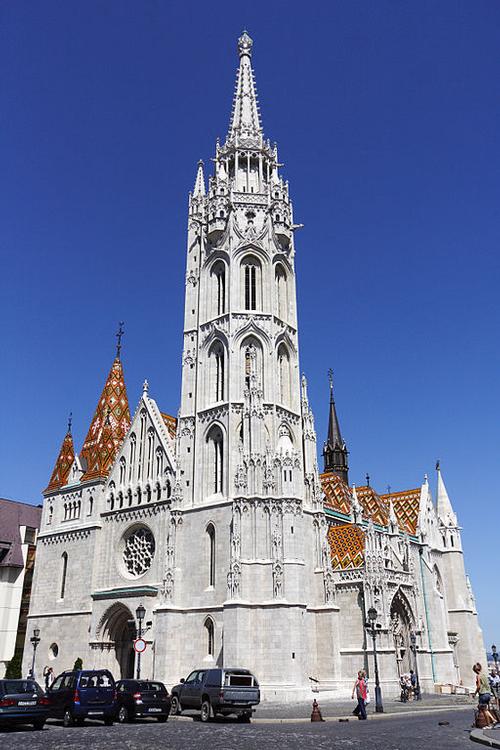 Budapest MatthiaschurchPhoto: D4m1en CC 3.0 Unported no changes made
Budapest MatthiaschurchPhoto: D4m1en CC 3.0 Unported no changes made
The Royal Palace, also known as Buda Castle, is a beautiful building on the castle hill. The oldest part of the current Royal Palace dates back to the 14th century and is connected to the city by a funicular (Siklo), which leads to the area around Clark Adam Square. The palace is home to an array of local treasures and works of art, within a series of museums and exhibition spaces.
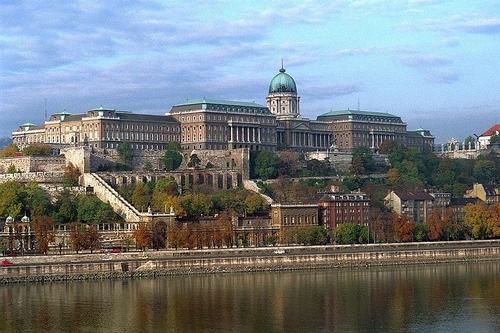 Royal Palace BudapestPhoto: Turelio CC-BY-SA-3.0-de no changes made
Royal Palace BudapestPhoto: Turelio CC-BY-SA-3.0-de no changes made
Hidden under the castle hill is a veritable maze of tunnels stretching for many miles. This fascinating network consists of a number of enormous rooms, which have been used for everything from air raid shelters to storage facilities. It's a great way to cool off on a hot day, you can book guided tours, but many areas can be explored unaccompanied, so don't forget to bring a flashlight.
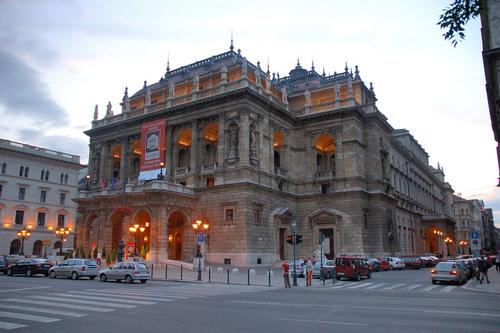 Hungarian State opera BudapestPhoto: PDXdj at English Wikipedia CC 3.0 no changes made
Hungarian State opera BudapestPhoto: PDXdj at English Wikipedia CC 3.0 no changes made
The Hungarian State Opera is a very ornate and important building in neo-renaissance style. It is located in the Terezváros area of the Pest district. The Hungarian State Opera was opened in September 1884 and is locally regarded as a masterpiece of architecture. The overarching auditorium can seat just over 1,250 people and is known for its exceptional acoustics.
With over 50 different museums, visitors to Budapest have plenty of choice. The Budapest History Museum on Castle Hill is an absolute highlight.
Budapest's museums are diverse and include religious exhibits at the Biblical Museum, a myriad of police paraphernalia at the Crime Museum, and everything you would like to know about the telephone technology in the Telephone Museum.
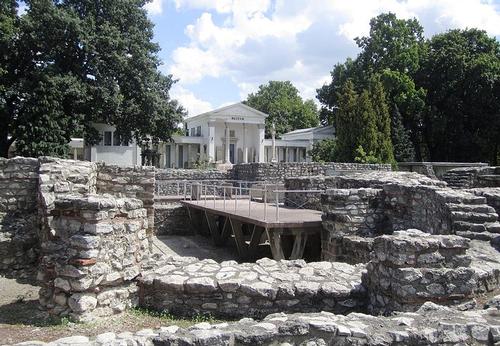 Acuincum museum BudapestPhoto: Elelicht CC 3.0 Unporte no changes made
Acuincum museum BudapestPhoto: Elelicht CC 3.0 Unporte no changes made
For many, the excellent Roman remains in the Museum are a must-see attraction and visitors will see many open-air Roman remains and ancient treasures.
The family-oriented Foundry Museum of Science and Technology is also popular and it is located in the second Budapest district. Here you will have a lot of interactive fun operating impressive machines from both the past and the present.
Tips
In Budapest you should undoubtedly have a seat in a typical Hungarian café. Here you can enjoy authentic Hungarian cuisine. Think goulash and other traditional stews. Hungarian cuisine is generally rich in fish, meat, all kinds of vegetables, garlic and potatoes. Meal soups are also popular in Hungarian restaurants, from bean soups to fish soups.
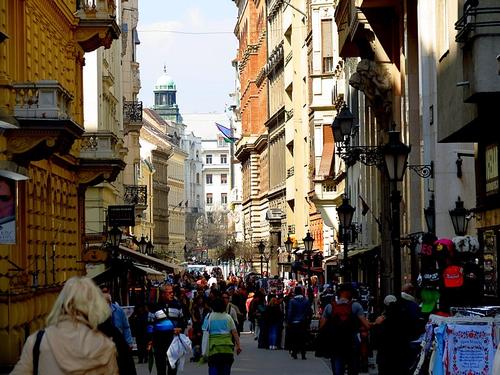 Vaci Street BudapestPhoto: Xorge CC 2.0 Generic no changes made
Vaci Street BudapestPhoto: Xorge CC 2.0 Generic no changes made
A day of shopping in Budapest will not disappoint. Visit Váci street, the heart of the city where the best shops can be found. You will not only find clothing stores, but also many jewelers and shops selling local products such as marzipan and wines. During such a day of shopping you can taste the real atmosphere of Budapest.
A special natural attraction in the area ing of Budapest is the Pálvölgy cave under the Buda hills. The cave was discovered in 1904 and is one of the longest caves in Hungary at a length of over 7 kilometers. You will especially find many impressive stalactites.
Useful links Budapest
BBC Country ProfilesWorld Fact Book Explore all Countries
How to call
Last updated June 2025
Copyright: Team - The World of Info